OnePlus 12 review:
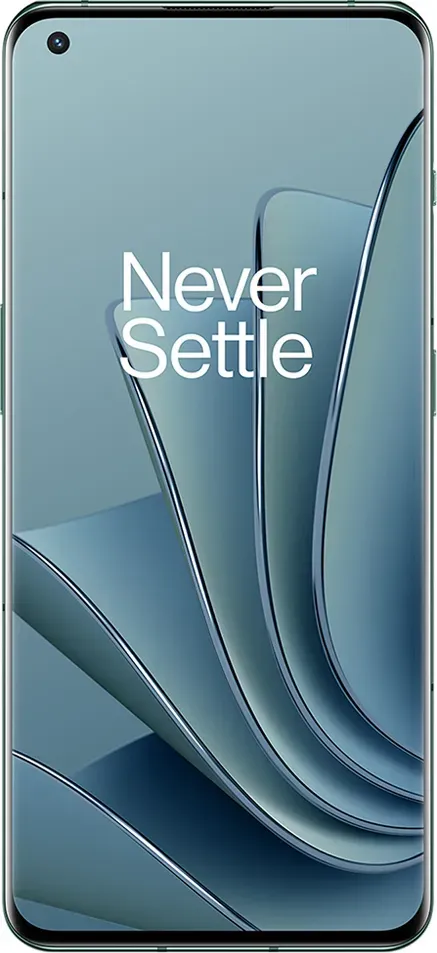
Many modest triumphs were achieved by the Chinese company in 2023, including the debut of a new QLED television, considerable enhancements to its mid-range Nord line, and the launch of a mechanical keyboard, among other things. The OnePlus 11 and the OnePlus Open were the focal points of the brilliant year of the Chinese firm.
With the release of the OnePlus 12, the firm intends to maintain its current triumphant run. Although the design is not much different from the model that was released the previous year, there are a few subtle adjustments that have been made to give it a more polished look. Other upgrades include a larger battery that lasts substantially longer, enhanced cameras that produce better photographs, and a new AMOLED screen that is among the brightest of any phone that is currently available. Except for the name change, this is practically the same as the Pro model, and it once again supports wireless charging.
Although the phone has a great deal of excellent qualities, its rivals are likewise advertising attractive enhancements for this year. With its less-than-stellar hardware, the Pixel 8 Pro continues to hold the title of the greatest Android smartphone overall. The Galaxy S24 series from Samsung places a significant emphasis on artificial intelligence, the cameras on the Xiaomi 14 series are of the highest quality, and the Pixel 8 Pro continues to be the finest Android device overall.
Even though OnePlus has made significant breakthroughs in hardware, the software has not changed and continues to have a greater number of issues than before. All things considered, the device is on par with the best in its category, which is pretty much the only thing that can be considered a disadvantage.
The Chinese business has been working hard for the last four years, and the OnePlus 12 is the first phone that embodies the Never Settle tagline. It is the product of many years of hard effort.
OnePlus 12: Release date and Price
It was first unveiled to the rest of the globe on January 23, 2024, at a premiere event that took place in New Delhi, India. Additionally, the OnePlus 12 was first released in China before the end of the year. OnePlus introduced the OnePlus 12R on the same day that it introduced the normal model. This model will be available for purchase in every region of the globe.
The version of the OnePlus 12 that I am now using has 16 gigabytes of random access memory (RAM) and 512 gigabytes of storage space, whereas the other version has 12 gigabytes of RAM and 256 gigabytes of storage space. OnePlus has decided not to ship the 24GB/1TB model abroad, even though it is now accessible in China. On a global scale, the following would be the price of the device:
The OnePlus 12 (12GB/256GB) is available for purchase for $799 or ₹65,999.
OnePlus 12 (16GB/512GB) is available for purchase for $899 or ₹69,999.
Even though the OnePlus 12 is $100 more costly than the OnePlus 11, the price that is being asked for it is the same. This is because you are getting twice as much basic storage as you did the previous year. The phone is priced in India at ₹9,000 ($108) more than its predecessor, which is also the case in the region. The price of the 256GB edition of the OnePlus 11, which was released the previous year, reduces to ₹3,000 ($36) when you take into consideration the 256GB variant.
OnePlus is simultaneously introducing the OnePlus 12R in addition to the OnePlus 12, which will be made accessible in countries all over the globe this year. The 12R, which is a fantastic purchase, will be available for purchase in a few weeks for $569 in the United States and ₹39,999 ($481) in India.
OnePlus 12: Design
The design language of OnePlus products has been constantly improved with each succeeding iteration, and the firm deserves praise for this. OnePlus may be described as having a singular style. A rear camera island that seamlessly integrates into the middle of the frame is shared by both the OnePlus 12 and its predecessor, making it almost impossible to differentiate between the two devices in terms of their appearance. A closer inspection of the OnePlus 9 Pro shows that it has several design characteristics with the OnePlus 9 Pro, such as the usage of rounded corners and soft curves on the sides at the edges.
The OnePlus 12 is much thicker (9.2 mm) than the OnePlus 11, which measures 8.5 mm in thickness. This is even though the two devices are relatively comparable in terms of height and breadth. The phone weighs 220g, which is a significant increase over its previous weight of 205g due to the larger 5400mAh battery. Even though the phone is more cumbersome than its rivals, it is nevertheless incredibly pleasant to use and operate because of the way that its weight distribution is precisely matched. It is possible to maintain the phone’s stability by placing it on a flat surface.
There is little question that the back camera housing is the main point of the device. It is visually captivating, and it is far more so than in previous years. This time, it is identical to the color of the rear, and the Flowy Emerald coloring effectively highlights the greatest characteristics of the module. I find that the steel ring that surrounds it mixes in well with the sides, and that is a feature that I truly like.
The look of the housing has been substantially improved as a result of the camera modules being placed in separate rings. This is only one of several updates that have been made. Once again, the stylized H serves the purpose of minimizing the amount of the Hasselblad emblem, which in turn makes the camera island more obvious and less crowded.
The color choice is one of the most significant aspects; the Flowy Emerald variant stands out visually among the other options. As was the case with the Marble Odyssey variant of the OnePlus 11 from the previous year, this one features an etched pattern into the glass back that gives it a unique feel. Because it is constructed out of beautiful satin, you won’t even be able to tell that it is not a phone with a glass enclosure. No matter what the circumstances are, it is equipped with a laminated glass panel that is protected by Gorilla Glass 5.
Additionally, there is a conventional black version of the phone as well as a Cool Blue version in case you are interested in changing the color of the phone. The sides of the Flowy Emerald model have a glossy covering; if you want a matte feel, you should choose the black version of the model.
In addition to the fact that the alert slider is still there, it has been moved to the left side of the screen. The former location resulted in interference with the antenna design, which is the reason for the alteration that was made. However, given that the volume rocker is now located in that particular location, I am uncertain whether or not there is any effect on the antenna signal. I am just concerned with expressing gratitude for the fact that the alert slider is still available; the modification does not have any effect on how it is used.
One of the most noticeable changes is the repositioning of the cutout for the front-facing camera; it seems as if OnePlus examined all of the other Android phones and came to the conclusion that they were all defective. A more credible reason is that, in contrast to previous years, the BOE panel that was given this year had the module provision in the center. This brought the device back on par with its rivals.
This device only provides IP65 water and dust resistance, which is not sufficient, particularly considering that other mid-range phones, such as the Redmi Note 13 Pro+, already come equipped with this feature. Ingress protection ratings of IP68 are not available for this device. OnePlus disclosed the following information in response to my inquiry on the reasons for the company’s decision to delay the certification of its device to the IP68 standard:
Based on our understanding of customer wants, which we gained via extensive research, we have painstakingly developed our solution to effectively meet those demands. The selection of an IP65 waterproof grade that we have available ought to be enough for the great majority of clients’ day-to-day requirements. In addition to providing remarkable protection against dust, water splashes, and light precipitation, it also protects the components found within from potentially damaging elements.
By including an infrared blaster in the smartphone, OnePlus is attempting to attract customers in India, regardless of the motivation for this decision. Line-of-sight infrared remote controls are used in a variety of electronic items, including air conditioners, TVs, and other electronic devices. Manufacturers like Xiaomi have been using this technology for more than 10 years.
When it comes to the design, I believe that OnePlus has done an excellent job overall. The OnePlus 12 has undergone a lot of modest improvements that will prove to be quite useful in the real world, even though there has not been much of a movement in the design philosophy.
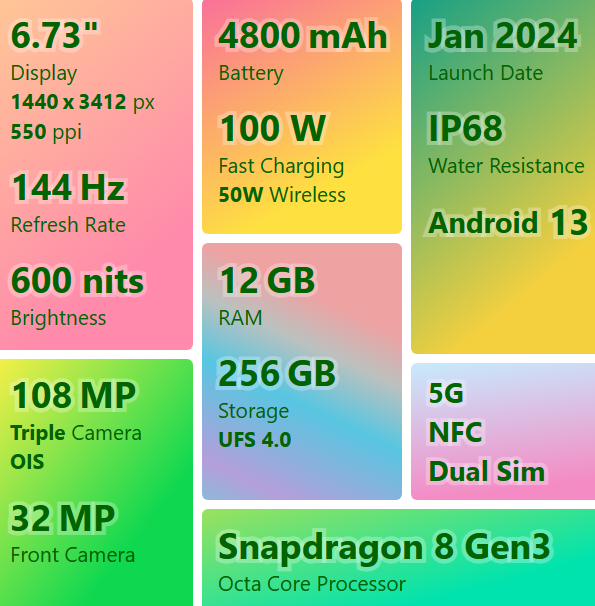
OnePlus 12: Display
The same LTPO technology that enables the screen to dynamically flip from 1Hz to 120Hz is still there in the OnePlus 12, even though the AMOLED display on the device is 6.82 inches in size. You will be able to experience high dynamic range (HDR) graphics with support for HDR10+ and Dolby Vision, in addition to having access to the Ultra HDR option that will be available in a forthcoming update for Android 14. This screen is very long-lasting because of the additional protection provided by Gorilla Glass Victus 2.
The screen’s brightness, on the other hand, is even more exciting than the display itself. It has the ability to achieve 1,600 nits in high brightness mode, which is 300 nits higher than the previous year, and it can reach an astonishing 4,500 nits when viewing HDR content, which is additional than any other phone available today. Incredible is the panel that is being given by BOE, which is the company. Even though I was unable to check the brightness claims, I absolutely must mention that the phone is quite capable of streaming high-dynamic range content. When contrasted with the OnePlus 11, it is easy to discern the differences between the two.
Furthermore, when it is used outdoors, it gets much brighter, and I did not see any issues with the ambient light sensor adjusting the brightness under the lighting conditions. It is an exciting feature that the new Aqua Touch function has been included; it prevents the touch response from being affected by water that is present on the screen. OnePlus describes this as a situation in which your fingertips grow sweaty as a result of intense gaming sessions. This is beneficial when you are outside in the rain and still need to use the phone.
Regarding that particular one, I am not certain, but the screen remained intact even after I sprayed it with water, and the touch sensitivity remained the same throughout. Users who are sensitive to PWM dimming should not have any strain as a consequence of using this device since it includes dimming at a frequency of 2,200Hz DC, which is also greatly welcomed.
To me, the most exciting thing was going to be the possibility of playing video games at a frame rate of 120 frames per second. This has been conspicuously lacking in past years, with ColorOS restricting all games to a frame rate of sixty frames per second. Given the quality of the gear that was available, the selection was perplexing; but, fortunately, that is not the case this year. The Pixelworks X7 visual engine is the reason why the feature is only accessible on the OnePlus 12R. However, it is not available on any of the other OnePlus smartphones since it is dependent on that engine.
The OnePlus 12 is intended to be able to handle 120 frames per second in Android games, however, in actuality, it does not perform that well. This is because of the X7. The majority of the games that I tried remained stuck at 60 frames per second. This included games such as Oddmar and Grimvalor, which are capable of reaching 120 frames per second on other phones. However, even when I activated the frame booster in the game’s turbo settings (which unlocks the X7), I was only able to achieve 60 frames per second.
Aside from that criticism that has been around for a long time, the OnePlus 12 is exceptional in every way, and the screen is a genuine delight to use. I believe that an update that is sent over the air will be able to fix this issue.
Because they chose to use BOE, we have not seen anything like the success that OnePlus has had in this sector. A lag was left behind by Samsung. Samsung continues to be the industry leader when it comes to AMOLED screens, and the business ensures that its products are constructed with components of the greatest possible excellence. The fact that BOE and Visionox, two Chinese manufacturers, are now offering panels that are not only as bright but also of similar quality means that there is now a genuine alternative, and Chinese companies are making the most of it.
PWM measurements
I can say that the OnePlus 12 has greater aesthetics in comparison to other phones, such as the Galaxy S24 series since I am a resident employee at Android Central who is sensitive to pulse wideband (PWM). This year, OnePlus worked with BOE to develop a screen that is more comfortable for the eyes. This is one of the reasons why this is the case.
The new “ultra anti-flicker” function of the phone is the starting point for everything. This feature is always on and employs an intriguing triple-pulse rhythm to ensure that the screen is not too dazzling regardless of how bright it appears to be.
A specialized algorithm makes an effort to imitate the sine wave pattern of an incandescent light, which is a more gentle kind of waveform, and this mode is a pleasant outcome. The transition between PWM dimming and DC-like dimming at high brightness levels is shown in the graph that can be seen below with this information.
The “single-pulse” DC-like dimming option that OnePlus offers, which is activated when super anti-flicker is off, results in the screen having a feel that is more like that of the Motorola Edge Plus (2023). The graph that follows illustrates the distinctive “single dip” in brightness that is connected with each pixel refresh of the display. In this particular example, it is 120 times per second on average, which is far less taxing on the eyes than PWM dimming at the same frequency in terms of brightness.
As an alternative, OnePlus exceeds Motorola’s alternatives when it comes to low brightness. This is because OnePlus uses 2,200Hz PWM dimming below 25% brightness. This PWM rate is applicable regardless of whether the anti-flicker is turned on or off; nonetheless, the behavior of this rate is drastically different depending on the option that you make.
Regardless of the circumstances, OnePlus has been successful in developing a screen that is more comfortable for the eyes than the normal flagship Android phone. Those who use this phone should not have any difficulties with their vision.
OnePlus 12: Performance
The OnePlus 12 has flawless hardware specifications, including a Snapdragon 8 Gen 3 processor, 16 gigabytes of random access memory (RAM), and 512 gigabytes of storage space (the one I’m using). The effectiveness of the cooling system is being highlighted by OnePlus because it results in significantly improved sustained performance in games that are particularly demanding.
The assertions are supported by the findings of real-world testing, which revealed that the mobile device achieved remarkable performance numbers even during extended gaming sessions without exhibiting any noticeable symptoms of throttling. In addition to this, it performed significantly better in terms of temperature control when compared to other devices that I tested that utilized the same silicon. Certainly, this is a fascinating discovery. Even though I was only able to test games at a frame rate of sixty frames per second, it is still a significant achievement to be able to keep that frame rate for more than sixty minutes in games such as Call of Duty Mobile.
According to the results of Geekbench 6, the phone has an abnormally poor performance, with a single-core score that is lower than the score (1008) that it received the previous year. The iQOO 12 achieves 74% faster scores than its predecessor, thanks to the same 8 Gen 3 processor. The phone is configured to throttle under any sustained load when it is being used for synthetic workloads, even though this does not manifest itself when the phone is being used in the real world.
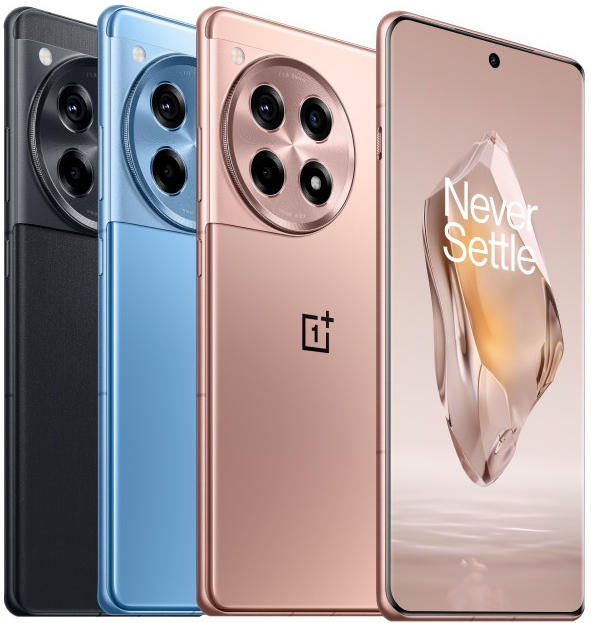
A respectable 58% stability score was achieved by the OnePlus 12 in the Solar Bay stress test conducted by 3DMark. This score was in comparison to the iQOO 12 and the Vivo X100 Pro performance. On the other hand, the fact that it never got hot—it reached a mere 40 degrees Celsius—was the thing that stood out. In comparison, the iQOO 12 reached 43 degrees, and the ASUS ROG Phone 8 Pro reached 53 degrees.
There were no slowdowns or glitches that I encountered while using the phone daily because it is designed to make the most of its powerful hardware. The interface is silky smooth, and I did not experience any of these issues. There is also a variant with 12GB/256GB of storage space, and OnePlus ought to have introduced the 24GB/1TB variant to markets outside of China much earlier.
It is not necessary for a device to have 24 gigabytes of random access memory (RAM), but the manufacturer asserts that Chinese users prefer devices with more RAM because they play games that require a lot of resources, such as Genshin Impact and Honkai: Star Rail. I can imagine where they are coming from. Even though the majority of users all over the world make use of both local and cloud storage, the reason why the 1TB version has not been released is because Chinese users prefer to use only local storage solutions. It would appear that OnePlus had no intention of releasing a phone that cost more than $899, even though I believe a 16GB/1TB model would have been an excellent choice.
Furthermore, OnePlus claims that the phone can be used for four years without exhibiting any noticeable signs of deterioration; I will carry out a review that spans a longer period to verify the viability of these claims. A Wi-Fi 7 modem, Bluetooth 5.4, Near Field Communication (NFC), LDAC and LHDC audio codecs, and global 5G Sub-6 bands are just some of the connectivity options that are available on the OnePlus 12.
The phone was able to reliably achieve Gigabit bandwidth when it was connected to the Orbi 970 Wi-Fi 7 router, and there were no issues with calls or connectivity in general. It is to OnePlus’s credit that the OnePlus 12 does not come equipped with a USB-C port that is restricted to the older USB 2.0 standard. This is something that I find helpful. As an alternative, the USB-C port has been updated to conform to the more recent USB 3.2 Gen 1 standard, which is an improvement that is very much appreciated.
One of my other favorite motors is the vibration motor because it offers reasonable configuration options and provides feedback that is both useful and granular when it is used in everyday situations. My experience with the OnePlus 12 has been very positive, and to my knowledge, it is one of the fastest phones that are currently on the market.
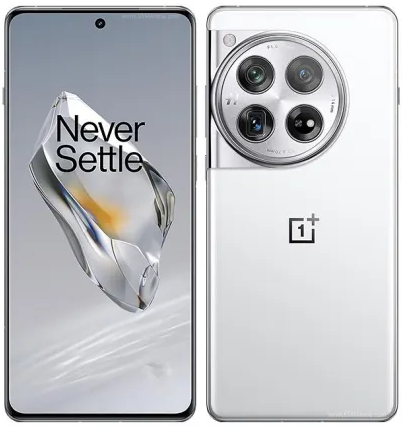
OnePlus 12: Battery life
Because OnePlus included a larger battery with a capacity of 5400 mAh in the OnePlus 12, the phone now has a significantly improved endurance rating. I was able to get approximately two days of use out of it, even when I used it extensively. It is no longer necessary for me to charge the device overnight because the battery life is so impressive with this device. Instead, I simply plug it in when the charge drops below 15%, and it takes less than half an hour for it to fully charge.
However, due to the larger battery, a full charge takes slightly more than thirty minutes, and the phone reaches fifty percent in slightly more than twelve minutes. Even though the OnePlus 12 retains the same 100W charging technology as its predecessor, the charging process takes slightly longer. As far as I am concerned, there is no reason to be concerned about the battery dying before the day is over, and I am completely content with the charging potential. Despite its size and the presence of a USB-A port, the 100W charger that is included in the package does an excellent job of charging the device dependably.
Since wireless charging was not available the previous year, the addition of this feature is currently the primary topic of conversation. One hour is all that is required to charge the battery when using the wireless charging stand, and the OnePlus 12 is compatible with the 50W AirVOOC standard. There are standard measures that are provided to extend the life of the battery, such as gradual charging, a maximum charge level limitation, and features that are situated similarly.
OnePlus 12: Cameras
After four years of collaboration, OnePlus and Hasselblad have redirected their efforts to ensure that all of their products have a higher level of clarity, more accurate colors, and improved control over low-light shadows and highlights. As a result of this, the OnePlus 12 has updated camera technology, which includes a 50-megapixel Sony LYT-808 with a 1/1.4-inch sensor, optical image stabilization, and much better light sensitivity. These cameras serve as the main cameras on the device.
When paired with the OnePlus 12, the LYT-808 operates well, following in the footsteps of its predecessor, the Open foldable mobile device. The 64-megapixel OmniVision OV64B telephoto lens, which is equipped with a 1/2-inch sensor and optical image stabilization (OIS), is a versatile accessory that enhances the capabilities of the main camera by offering 3x optical zoom and 6x in-sensor zoom. Even if the 120x digital zoom is mostly a marketing device, the truth remains that photographs shot at 10x are acceptable. This is the case with both digital and analog zooms.
The rear cameras are finished off by a 48-megapixel wide-angle lens, which is equipped with a 1/2-inch sensor and a Sony IMX581 lens with an aperture of f/2.2. At a distance of just 3.5 centimeters, you can take photographs that are of an acceptable quality thanks to the lens’s ability to focus and its dual usage as a macro photographer. The focal length of the main camera is 23 millimeters, the wide-angle lens is 14 millimeters, and the zoom lens may be adjusted. The focal length of the zoom lens can range from 70 millimeters at three times to 145 millimeters at six times. There is no autofocus, just as there was the previous year, and the front-facing Sony IMX615 sensor has a resolution of 32 megapixels and a focal length of 2.4.
Both the main camera and the 3x lens are capable of capturing in Dolby Vision at resolutions of up to 4K/30. Additionally, three back cameras are capable of recording in 4K at a frame rate of 60 frames per second. The standard Hasselblad filters may be used to improve the quality of both still photographs and moving films from the camera. Cameras manufactured by Hasselblad are well-known for their characteristic leaf shutter sound and for preserving an interface that is close to that of earlier-generation cameras. Within the whole of the user interface, orange highlights may be seen.
When you activate the watermark mode, you have the option of adding a bar to the bottom of your photographs that shows the following information: the shooting settings, the name of your phone, and the Hasselblad logo. Showing off your photographic abilities is a wonderful opportunity to do so. You may add a conventional watermark that shows a photograph, as well as location data, the current time and date, and custom text, in addition to the OnePlus | Hasselblad overlay that is already present in the image.
The ability to alter the normal settings to your satisfaction, the ability to shoot in RAW, and the ability to preserve the pro mode are all included in this feature. When filming in high resolution, you have the option of selecting from three distinct sensors. In addition to film and X-Pan, you also can record in panoramic, tilt-shift, slow-motion, and dual-view video modes.
The excellent photographic capabilities of the OnePlus 12 are characterized by a wide variety of impressive features, including color accuracy, dynamic range, and impressive detail. These features are shown in all lighting settings. When compared to other models from more recent generations, like as the Galaxy S24 and the Pixel 8 Pro, the image quality may be described as being considerably superior to that of prior versions. The vegetation is adequately smoothed out without being too harsh, and the color balance is right on; the colors are brilliant without being oversaturated, and the depiction is realistic. The colors are also accurate.
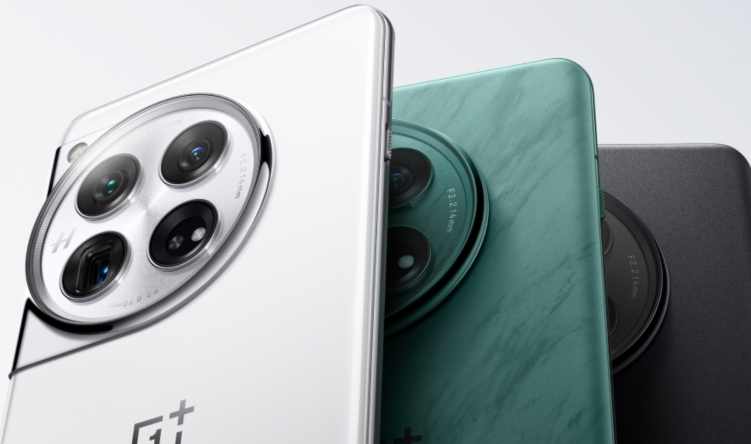
Additionally, the phone performs quite well in low-light circumstances, being able to expertly balance highlights to capture a great deal of information without any grain or noise. Even with the low lighting circumstances, the styled sound of the Audeze MM-500 was able to The stock photo shows a design that can be read that is located above the grille and the insignia.
Both the OnePlus 12 and the Pixel 8 Pro are equally impressive when it comes to their performance in low-light conditions. Even though the end images are often warmer than you would like, you nevertheless manage to capture a great deal of information. In general, the camera on the Pixel 8 Pro is excellent; nevertheless, it still has a little edge because it can capture fine details.
The new telephoto lens is capable of producing photos that are clean, detailed, and devoid of artifacts at zoom ranges of 3x and 6x, demonstrating that it is a powerful lens in its own right. Even though the Galaxy S24 Ultra and the Pixel 8 Pro are still capable of taking better photographs up to a factor of ten, you are still getting a respectable showing here.
Beginning at a magnification of ten times, issues start to become noticeable, and at any greater magnification, the image becomes worthless owing to the extra processing that occurs. Despite this, it is remarkable that you may get decent photographs with a magnification of up to 10 times the original size.
The zoom lens on the OnePlus 12 offers a clear demonstration of how much progress has been made over the previous year when compared to the top phones from Google and Samsung. At 10x, the OnePlus 12 is capable of taking acceptable photographs, and although the S24 Ultra is unquestionably superior in terms of detail, the 12 is not too far behind. OnePlus is famously severe with noise suppression, which results in a notable drop in visual clarity. However, there is one catch: OnePlus is notoriously aggressive with noise suppression.
The OnePlus 12 offers great colors and little noise, but the Pixel 8 Pro still clearly outperforms it when it comes to capturing finer details. The results are practically comparable when seen at a magnification of five times.
Additionally, it is capable of capturing stunning macro shots and performs very well in challenging environments because of its wide-angle lens. The video-capturing capabilities of OnePlus smartphones have always been lacking, but the OnePlus 12 marks a significant improvement in this regard. Additionally, the OnePlus 12 is equipped with Dolby Vision. Watching high dynamic range (HDR) movies on a large screen will leave you in awe at the clarity, sharpness, and consistency of the images. Also, the phone can zero in on a subject rapidly.
In addition to the apparent enhancements offered by the landscape mode, the phone is also capable of producing some very beautiful photographs. The capability to easily adjust the depth of focus and choose lenses with magnifications of 1x, 2x, and 3x is one of the most appealing features. In addition, you get a terrific backdrop segmentation and a crisp blur effect, both of which were areas in which the OnePlus 11 suffered. Moreover, Hasselblad filters can be included in this mode.
Taking everything into consideration, the cameras on the OnePlus 12 were OnePlus’ best performance yet. To compete with high-end smartphones such as the Galaxy S24 Ultra and the Pixel 8 Pro, the phone performs an admirable job of keeping up with the competition.
OnePlus 12: Software
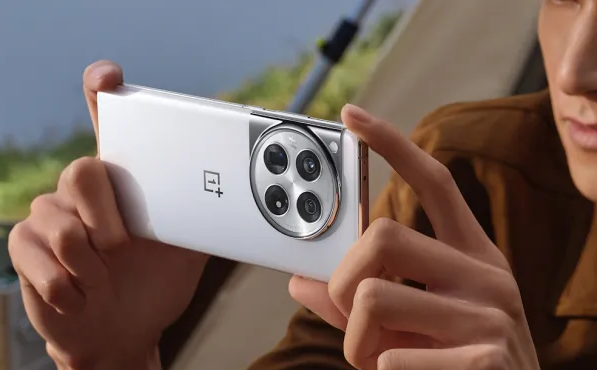
To tell you the truth, I was anticipating that Chinese manufacturers would immediately capitalize on all of this AI-fueled mayhem; yet, Chinese manufacturers have been strangely silent. ColorOS 14 and the OnePlus 12 both launch with identical user experiences; however, they are referred to by different names. As a result, there are no new features that can be used by this device.
The most recent version of OxygenOS, which is based on Android 14, does not include any significant updates or additions. Despite the number of evident style components, the design is current, and the interface is fluid and free of bugs right out of the box, which is a welcome change of pace. There are also a great deal of customization options available, and anybody who has used a phone manufactured by OPPO or OnePlus within the last two years ought to feel perfectly at home with this experience.
An analysis of the insects is going to be presented from now on. At this point, I have the procedure down pat, and I change the electrical devices every two weeks. It was a huge letdown to switch to the OnePlus 12 since it only installed fifty percent of the programs that I had previously loaded. In the case that the data transfer was unsuccessful, my first response was to attempt to reset the phone; unfortunately, this did not alleviate the problem. A trip to the Play Store was necessary to install about one hundred apps; however, switching to ColorOS, which is a Chinese version that does not include Google services, was a considerably easier process.
After I had finally gotten everything organized, I saw that the categorization was also wrong. The name of an application on OxygenOS will not be arranged in alphabetical order if it is written in lowercase letters for whatever reason. This was also the case the previous year, but I didn’t notice it on the OnePlus 11 since I didn’t have any apps that were composed completely of lowercase characters at the time.
Consequently, the fact that I was able to steer clear of any challenges with stability this time around is, in my opinion, worth celebrating. When it comes to software updates, the OnePlus 12 will get security patches for four years and receive Android firmware updates for five years. There has been a shift in the manner in which Android updates operate as a result of Google and Samsung. Even though I don’t mind waiting for four operating system upgrades, it would be wonderful if Chinese firms would give the same quality guarantee on their goods.
OnePlus 12 vs Galaxy S24
In addition to the Galaxy S24, which stands out as a formidable competitor, Samsung is introducing a multitude of goods this year, particularly in the field of artificial intelligence. A dynamic refresh is available on the 120Hz AMOLED screen of the phone, which also has great back cameras and a battery life that is within acceptable limits. The user interface receives an excessive amount of skinning, a significant amount of bloatware is added, and the battery life is not comparable to that of the OnePlus 12. The promise of a seven-year upgrade is the primary selling factor; however, the Exynos model is provided for purchasers who are located outside of China and the United States; thus, we will have to wait and see how well it performs this year.
If you are searching for a successor to the OnePlus 12 and are a lover of its design, the OnePlus 12R will be released this year in markets all over the globe, and its performance in the past indicates that it will live up to the expectations that have been set for it. In the meanwhile, I would want you to be aware that it is a potential candidate until I have more information to give on that gadget in a little over two weeks. In a similar vein, the OnePlus 11 from the previous year is still an excellent choice if you are able to locate a price that is reasonable, since it has maintained its quality over the course of time.
I really like the luxury phone designs that Vivo creates, and the X100 Pro is no exception to this rule with its great look and superb back cameras. With a price that is roughly comparable to that of the OnePlus 12, the Dimensity 9300 is able to compete with the products that Qualcomm has to offer this year. It will get the same number of software updates as ever before, and there are no additional features that you will be missing out on.
Read More:
- Full Explanation of NordVPN
- Smokeless fireplaces indoor and outdoor
- Loaded Fathom Longboard
- Full Explanation of iMovie software
- How To Get Your Instagram Back After A Hack



Pingback: All About Sora Ai - My Best Niches